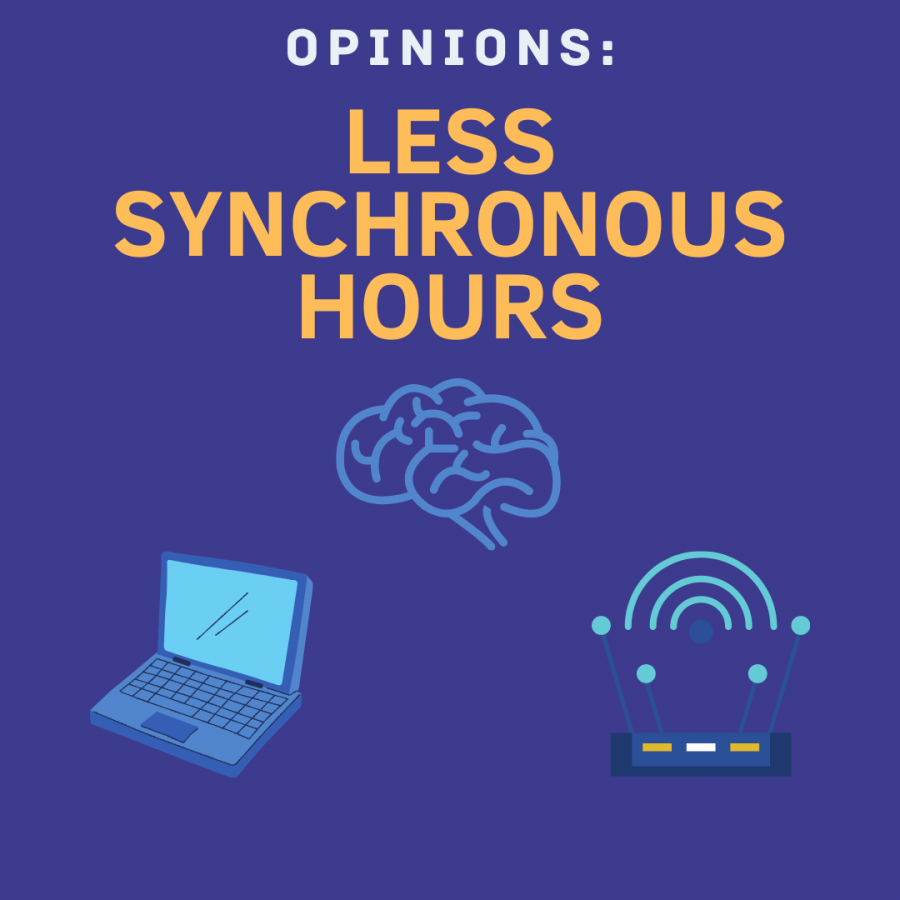Opinions: We Need Less Synchronous Hours
December 3, 2020
Ever since the beginning of this year, things have been different. People’s sleep schedules, activities and even way of thinking have changed. Starting from March 18, the Fremont Union High School District turned to online learning to continue student education. And while it seemed like the right choice for the first few weeks, the downsides quickly emerged after a couple of months.
With classes that are 90 minutes long and homework that piles up day by day, spending more than six hours in front of a screen has been our new normal for over three months.
On the surface, it seems like a technological paradise: anybody can do whatever they want in the comforts of their own home! But it is not always as simple as it looks.
The long synchronous hours that come hand-in-hand with online learning prove to be a functional but strenuous alternative. The gap between different households, the numerous adverse health effects and better options all point to one solution: fewer synchronous hours.
Now that everyone is staying at home, it is hard to learn in ideal conditions. Unwanted background noise and unflattering backdrops are just a few examples. While Zoom has found ways to combat those issues, varying WiFi connections are also a big concern.
Said Colleen Faherty, a reporter from Inside Higher Ed, “A recent study by WhistleOut, for example, found that one-third of adult respondents who transitioned to working or studying from home had been prevented from doing so by weak internet. Two-thirds said their video calls had cut out, frozen or disconnected.”
Both teachers and students alike are affected by poor WiFi, and because of that, having fewer synchronous hours is crucial. With more time for asynchronous learning, students and teachers can spend their time doing what they need to do rather than spending it on a laggy hour-long lecture.
Of course, lousy WiFi has temporary effects most of the time. Staring at a screen for more than six hours, however, does not. To answer this problem, many have resorted to buying blue-light glasses to protect their eyes. Blue-light glasses, which reflect blue light, help guard one’s eyes against the extensive amount produced from a screen. With the considerable number of hours we spend in front of an electronic device, reducing the effects of blue light is crucial. Blue light can be especially harmful at night since it disrupts the body’s circadian rhythm.
Even though these glasses may seem like the perfect solution to protect people’s eyes against their screens, everything comes with a price. For one, not everyone can buy these blue-light glasses.
Said Ralph Ellis from WebMD Health News, “Calls to optometry offices showed that adding blue light blocking to prescription glasses cost $40–$60 at LensCrafters and $47–$125 at Pearle Vision, with nonprescription blue light glasses starting around $99.”
Low-end but sufficient pairs can range from $20 to $60. Some, like those from YesStyle.com, cost as little as $5. Others can go up to nearly $200 at GlassesUSA.com. The wide range of price tags makes it difficult to find the ones that work best, making it laborious to find cheap and practical blue-light glasses.
Even if getting a decent pair were easy, it still wouldn’t account for the six-plus hours spent sitting down. Students have to sit at a screen for more than five hours for three classes on a typical synchronous learning day. For those with four periods, it adds up to more than six hours. These numbers quickly pass seven hours if the calculation includes time for homework.
Said Edward R. Laskowski, M.D., “Any extended sitting — such as at a desk, behind a wheel or in front of a screen — can be harmful. An analysis of 13 studies of sitting time and activity levels found that those who sat for more than eight hours a day with no physical activity had a risk of dying similar to the risks of dying posed by obesity and smoking.”
Most classes do not offer “movement breaks” or short periods to get away from the screen. Without them, students have to sit in one spot for the entire duration of the class, only getting up during the 15-minute break between classes and during P.E., an optional course that not all students have.
According to WebMD, sitting for an extended period counters any time spent exercising or working out. That means sitting for too long can reverse benefits from even the most demanding workouts in P.E.
With all of these health drawbacks, it is surprising to think that this might go on for another semester. Decreasing the amount of time we spend on synchronous learning opens doors to many other opportunities, including more asynchronous learning. Not only is asynchronous learning self-paced, but students and teachers can take time to relax between grading papers or answering worksheets. Classes that do provide short pauses during lectures only give one that lasts five to ten minutes instead of shorter, more frequent breaks to stand up and walk around, making asynchronous learning a more convenient alternative.
Besides more asynchronous learning, students can utilize the “20-20-20” rule on their own in between assignments.
Said Ellis, “[Many] recommend adopting the 20-20-20 rule. That means that every 20 minutes you’ll look at an object at least 20 feet away for 20 seconds.” Making time during the day to walk or bike around the neighborhood is also important, or if that is not possible, using eye drops can also be helpful.





